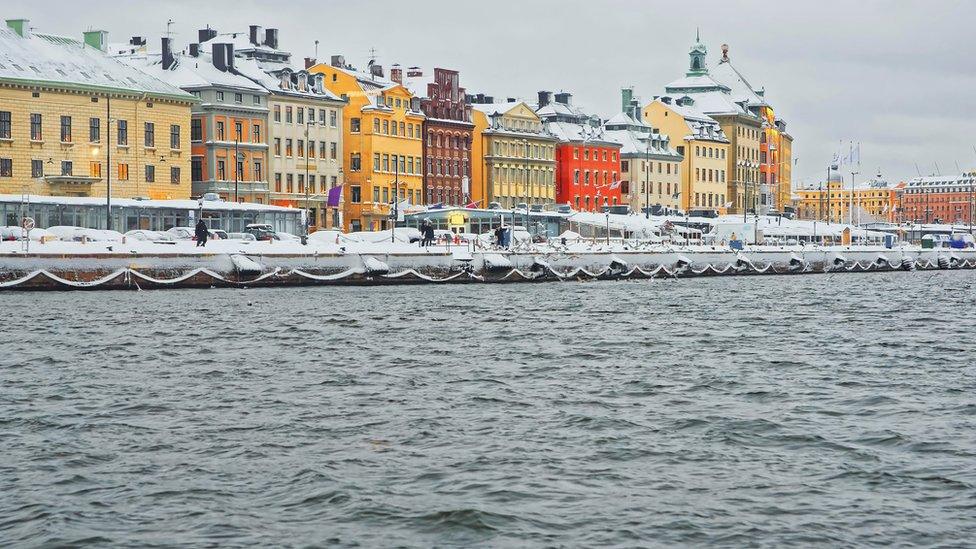Tomorrow's Cities: A day in the life of a smart slum
- Published
WATCH: A favela powered by the sun
Cities need new ways to create energy and cut down on waste, and some of the most innovative - and low-tech - solutions may well be found in the parts of town the city authorities are least likely to talk about.
While some bemoan crowded commutes, for slum-dwellers it is access to basic services such as running water or electricity that is the real issue.
And where there is need, there is often innovation.
So can the technology being rolled out in the world's most deprived urban areas offer not just hope for those who live there but also lessons for the richer parts of the city?
Night football
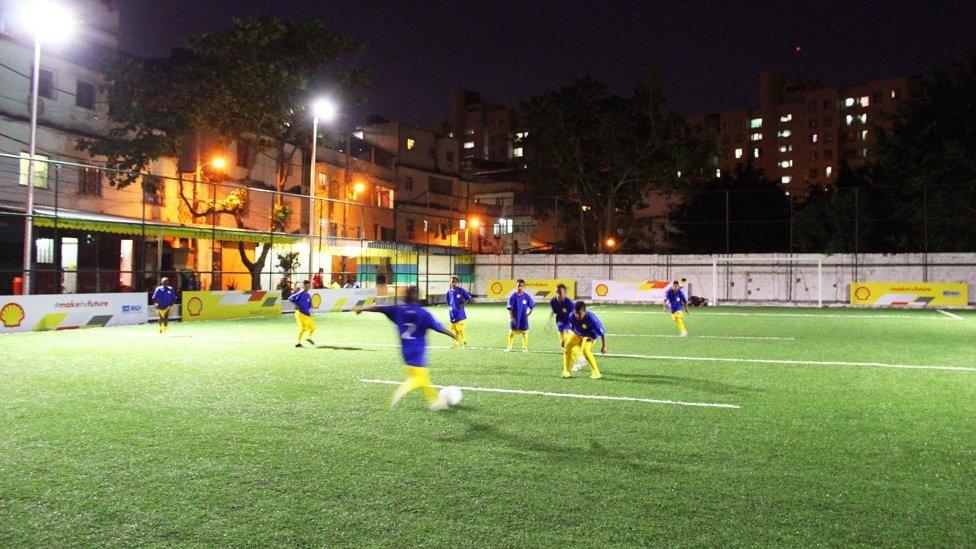
The new pitch has delighted local children, although they now are trying to source more boots
In Brazil, just 0.02% of electricity is supplied by solar energy, despite a plentiful supply of Sun.
But in some of Rio's most deprived favelas, that is changing and solar is proving to be a cheap, clean alternative to traditional electricity.
Football is hugely important in Brazil, and all of its famous favelas have makeshift pitches full of children playing the beautiful game.
For most, the match ends when the Sun goes down, but in the Morro da Mineira favela, in Rio de Janeiro, play can continue long into the night, thanks to lights powered by the players themselves.
The six LED floodlights surrounding the field are powered by 200 kinetic tiles buried under the Astroturf, which capture the energy generated by the players' footsteps.
As players put weight on the tiles beneath the pitch, it causes electric-magnetic induction generators to kick in and generate electricity.
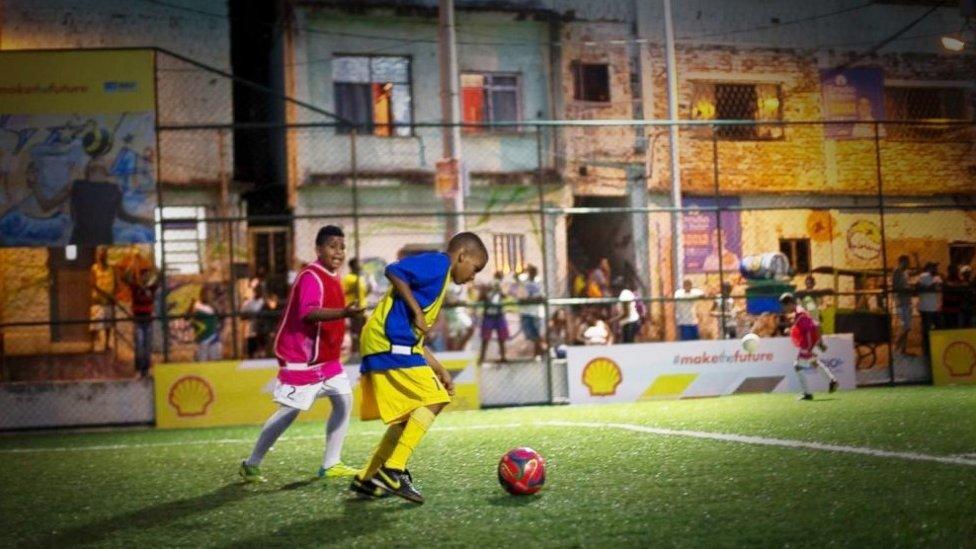
The children need boots, which has created a new problem for those who can't afford them
Pavegen is a clean energy company founded by UK entrepreneur Laurence Kemball-Cook.
"We changed the way a whole community looks at energy and science. We ended up inspiring a whole favela of children who saw that the power of sport could turn the lights on," he told the BBC
Those children spoke about how it had changed their lives.
Luis Guilherme, 13, said that the lit pitch made him feel like "a professional football player".
"The project is really nice because, now, the field is wonderful. There aren't holes anymore, so I can play without hurting myself. I'm very glad because I have a nice place to play with my friends."
His friend, Lucas Catro de Almeida, said: "The new pitch is nice and beautiful. I love soccer, so I can say that the project changed my life."
And Matheus de Souza Claudino, 15, said: "The pitch really changed my life. Soccer is my favourite sport, and before the works of repair, there were many holes in the field and we used to hurt all the time. Now, it's really a nice place to play."
But a new pitch, even one with floodlights, brings new problems.
Luis said: "We can only play if we are wearing boots, so sometimes my cousin lends me his pair."
Lucas too relies on "someone to lend me boots to play".



Light up
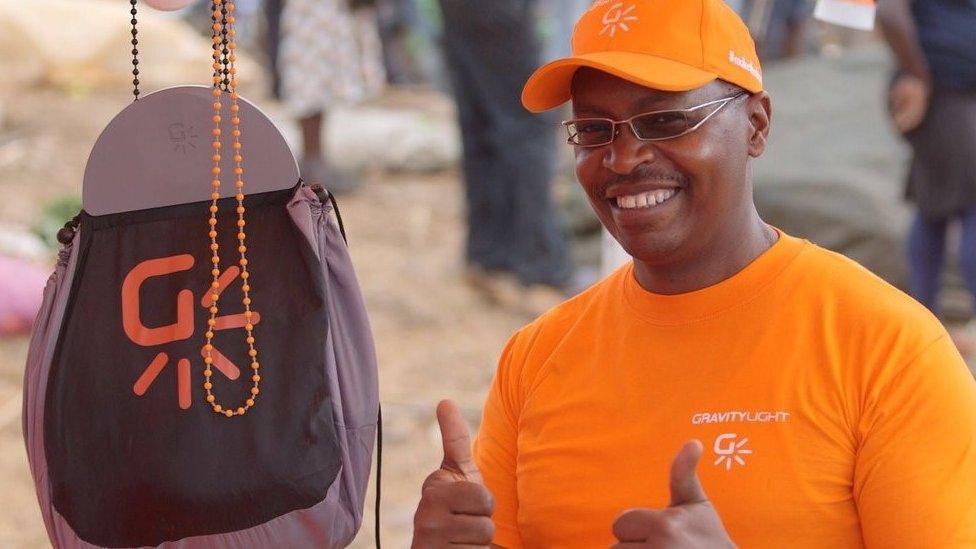
The simple invention uses weight to light homes
Korogocho, the fourth largest slum in the capital, Nairobi, has just become one of 50 locations in Kenya to benefit from solar lighting powered by gravity.
GravityLight offers a clean, safe, affordable and reliable alternative to other fuel sources, including kerosene lamps, which are used in homes by millions of families in Africa.
The low-carbon innovation does not need batteries or sunlight and costs nothing to run.
It works by connecting an elevated bag filled with 12kg (1st 12lb) of rocks or sand to a pulley system.
Each time the weight descends to the ground, it powers a generator to create 20 minutes of light.
It takes three seconds to lift, for 30 minutes of light.
"The money saved from not buying paraffin, I use for tuition for one of my children," said Asha.
It is estimated that buying kerosene costs between 10% and 20% of the income of the very poor, and a single lamp burning for four hours a day can emit 100kg of carbon dioxide per year.

The Korogocho slum in Nairobi is home to 150,000 residents
The next step for GravityLight will be to test an assembly line in Kenya to manufacture its product and work with local distribution networks and communities to create jobs.
GravityLight, like Pavegen, is one of seven green energy ideas being supported by oil giant Shell.
Shell Kenya country chairman Brian Muriuki said. "Across Kenya, 77% of people are living without access to electricity.
"Bringing GravityLight technology to the country shows how collaboration and smart thinking really is the key to providing the most basic of human rights, while enabling people to prosper and progress."
Recycling hub
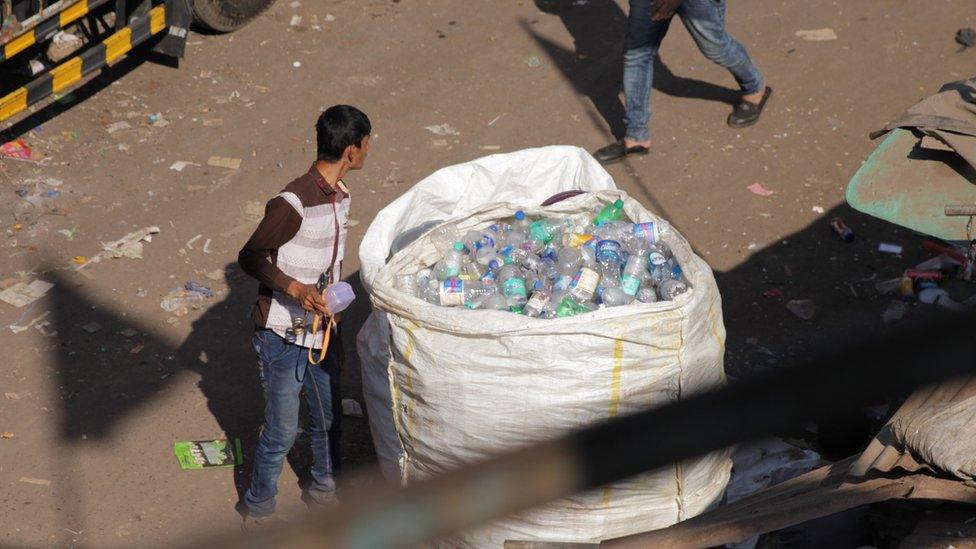
Much of Mumbai's waste is recycled in Dharavi
Urban planners are increasingly considering high-tech solutions to deal with increasing amounts of rubbish - with some investing in vast underground systems for clearing waste and others turning to smart bins that can inform the refuse collection service when they are full.
Meanwhile, a slum in Mumbai is getting on and solving the problem for the whole city.
Among the dark alleyways of Dharavi are an estimated 15,000 single-room factories, employing about a quarter of a million people and turning over an estimated $1bn (£0.8bn) each year. All busy recycling.
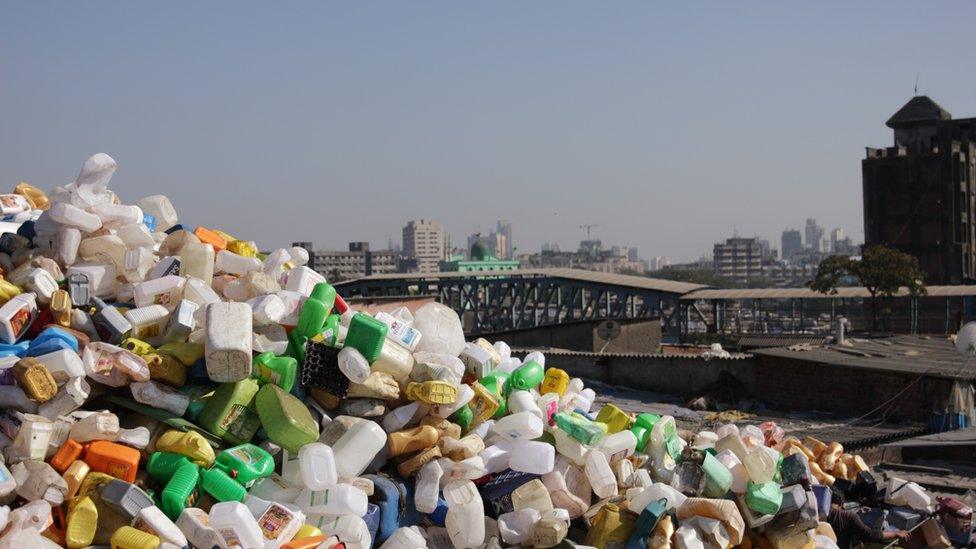
Clearing slums to make way for smart cities could create mountains of waste with no place to recycle it
Mumbai generates more than 7,000 tonnes of waste each day, which the slum-dwellers - known as rag-pickers - sell to scrap dealers who process it and sell it on to be recycled or used directly by industry.
In Dharavi's 13th compound, over 80% of Mumbai's waste is given a new lease of life.
One environmental group described Dharavi as "the green lung stopping Mumbai choking to death on its own waste".
About a third of India's 1.2 billion people live in cities, with numbers growing every year as migrants leave their villages in search of a better standard of living in urban areas.
It is impossible to say how many end up in slums but it is many, many millions.
Their future is by no means certain as the Indian government pledges to create 100 smart cities, with little thought for its poorest communities.
Much of the money for the smart cities initiative is going to small, often wealthy, regions in cities, according to Bhanu Joshi, a research associate at New Delhi think tank The Centre for Policy Research.
"The problem with the smart city spiel is it is seen as having to be modern and create a certain template for cities, which removes you from acknowledging the real texture of city life," he told the BBC.
"The talk of world class cities leaves the informal settlements, the waste collectors, the cleaners out.
"They become invisible, and the fact that they are important to the economy is not acknowledged."
- Published23 March 2017
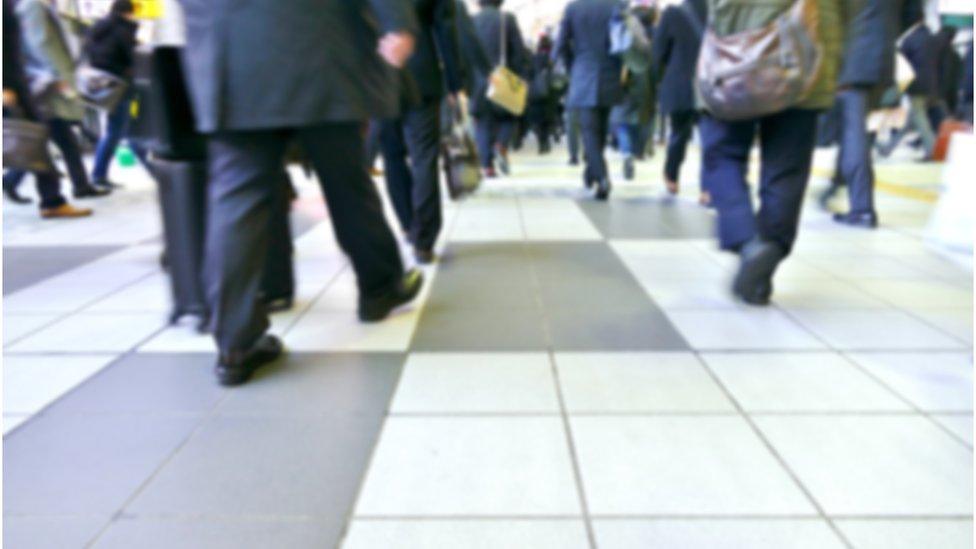
- Published8 March 2017
